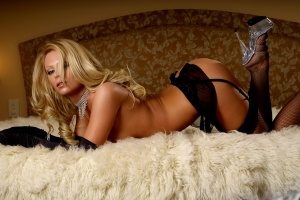Choosing lesbian nick names is not always a simple task. You need to be able to choose a name that suits your personality and the character you play. Then, you need to be able to make sure that you don’t use the same name in different movies and shows.
‘Fanny’
‘Fanny’ was an all female rock and roll group from the 70s. Although their music was lauded by David Bowie, their popularity was limited.
The band, which was made up of Filipina American women, paved the way for female rock bands like The Runaways and Go-Go’s. Their first album was released in 1970, and they played the same bill as Procol Harum and The Kinks.
‘Fanny’ was also known for being one of the more racial diverse bands to come out of the sixties. Lead guitarist June Millington was born in the Philippines, but moved to the United States in 1961. As a result of this racial disparity, the band suffered from a lot of racial discrimination.
The term ‘Fanny’ is also the name of a new record released by the band in 2007. This album is the group’s first in seven years. The band’s line-up has changed a bit, with Patti Quatro joining the ranks.
‘Power Dyke’
‘Power Dyke’ among lesbian nick names is a term used by some in the gay community to describe a female policymaker who has the ability to make the decisions that are necessary to benefit the gay community. This term is also a common joke that pokes fun at the perception that lesbians are emotionally invested in relationships quickly.
A “power dyke” is often a lawyer, or a top policymaker. She is a woman with the most powerful influence in her field. The term is also used to refer to a leader in the lesbian community, a woman who is unapologetic about her love for ladies.
The word ‘dyke’ has been used as a slur by the gay community for years. It was first used to describe lesbians, but it has also been used to label men who are not straight.
‘Lone Star Lesbian’
‘Lone Star Lesbian’ is a term used to describe a queer woman who has never had sex with a man. It can also be used to describe a straight man who has had sex with a lesbian. It’s not uncommon for women to go through a period of time in which they haven’t had sex. During this period they may identify as a lesbian.
There are several types of ‘Lone Star Lesbian’. The best ones are those that display the least amount of heteronormative behavior. This can include being overtly homosexual, asexual, or having a bisexual or tepid sex relationship.
The ‘lone star lesbian’ can actually be found in many different places. While some may consider a ‘lone star’ to be a tad on the nose, they are not in fact that rare. If you haven’t heard of a ‘lone star’ before, then you are probably missing out.
‘Chapstick’
‘Chapstick’ is a lesbian nick name that became popular in the 1990s. The name was coined by a famous LGBTQ+ television host.
Chapstick refers to a female lesbian who enjoys the feminine. They tend to wear more feminine clothing and cosmetics. They may even have long fingernails.
They also may wear a edgy haircut. They will probably wear plaid. They will likely use Ponds lotion to keep their skin moisturized. They will not need a lot of makeup. They will also be more technologically savvy. They will have a phone with a camera and they will have a video editor for a hobby. They will also be a graphic designer.
They will have tattoos that are impressive. They may have razor sharp jawlines. They will be very sexy. They will be very attracted to other lipstick lesbians.
‘Butch’
Originally butch was a term to describe a tough, young man. Later, it was used to describe lesbians.
Butch is a term that originated in the 1940s. It is used to describe a woman who is attracted to a femme. Butch and female were initially considered taboo, but the 1980s saw a resurgence of butch and femme. The butch/femme dynamic has become a popular topic in entertainment, and there are many butches in pop culture.
The word “butch” has a complex history. It may have originally been an abbreviation for butcher. The word gained formal identity during the 1940s and 1950s in underground American lesbian bars.
In the 1970s, a new generation of young lesbians began to challenge gender roles. Their actions changed the face of the gay community. Rather than hiding their sexuality, these youths were open about their identity and fought against violence.

